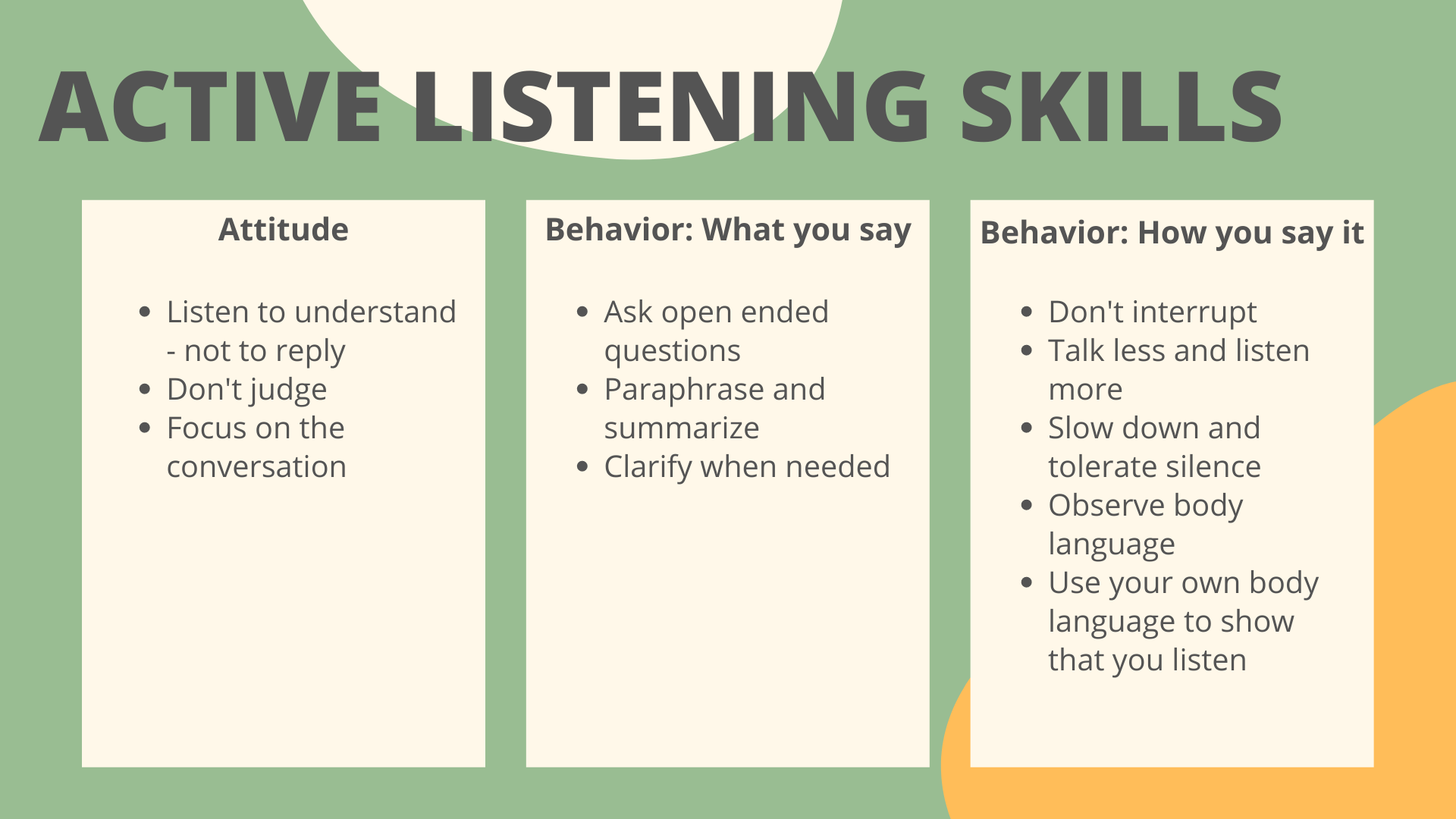Active listening: 11 steps to take
My colleagues and team members often say to me that one of my key strengths is my ability to listen to others. I used to shrug this compliment off. Doesn’t “ability to listen” sound like quite a minor strength? Couldn’t anyone just shut up and use their ears instead of talking constantly?
It turns out it’s not so straightforward. At least not for everyone and not in every situation. Why is that?
What prevents effective active listening?
You are too focused on your own agenda. Sometimes your eagerness to convince others on your point of view and progress your own agenda makes you not effectively listen to others. Instead of hearing what they really say, you only hear the points that support your case and some possible counter arguments you need to tackle.
You prepare your counter argument when the other person is listening. This is human but effectively prevents you from actively listening to the other person as most of your brain power goes to formulating what you are going to say next.
You are nervous and thinking about how you appear in the conversation. Unfortunately this happens especially in situations where you are desperate to make a good impression, for instance in job interviews, when meeting your new boss etc.
Focusing on the present moment is generally very difficult. Especially if you have your cell phone at hand. I suppose most of us today lack the ability to fully focus on the present moment and here technology and social media have a major role to play.
Luckily, active listening is a skill one can learn. The only precondition is willingness to listen and understand — instead of bulldozing people with your own opinions. It also does get easier over time, when you gain confidence and fear is no longer blocking your senses.
11 steps to active listening
Change your attitude in conversations. Listen to the others to understand them instead of replying to them. You don’t need to prepare your response while the other person is speaking. Listen carefully. If there is then a short break before you can reply, don’t worry. Silence is not dangerous.
Avoid judgment. Many times entering a conversation with very strong prejudices or thoughts on what should happen at the end of the discussion will prevent you from actually hearing what the other person is saying.
Focus. Focus on the other person. Do not write Slack messages, check your phone or think of other things while discussing with someone.
Help the other person to deepen and develop their own thinking by asking open ended questions. By asking questions you keep the discussion in the topic, instead of starting to push your own agenda.
Paraphrase and summarize. Part of active listening is to make sure you are on the same page. One of the ways to do this is to paraphrase what the other person said with your own words and summarize the discussion.
Ask clarifying questions when you need to to improve understanding.
Try not to interrupt the other person. Show that you respect the other by listening to their whole point instead of rushing to present your point of view.
Simply talk less and listen more. The best sales people focus on listening to the prospects and learning their issues. The best leaders are also great listeners.
Slow down and tolerate silence. This is one of the ways you can encourage the other person to speak more.
Voice is only one fraction of how we communicate in the conversation. While listening to the other person, also observe their body language.
Use your own body language to communicate that you are listening: lean towards the speaker, keep eye contact, smile approvingly and nod.
For a leader, the ability to listen to people is fundamental. It helps in making better decisions, builds trust and motivation. Luckily it’s also something everyone can learn and practice in their daily life.

